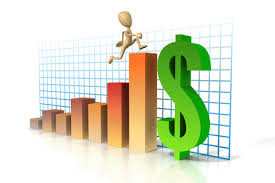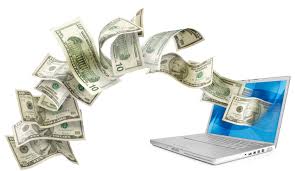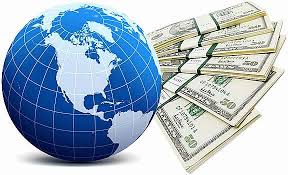Understanding Bubbles
The present day financial markets are very jittery, almost all asset classes are in some kind of frothiness, and having to come to terms with higher rates by Federal Reserve. Are prices in each of these assets over priced? Is the market shaky? Should everyone exit into cash? Let's look at a few asset classes that seems bubblish. I would also rate them on a scale of 1-10 for bubble effect (1 - very safe and a tad undervalued; 5 - fairly valued; 8 - overpriced; 10 - soap in mouth). Isn't it amazing that we have so many presumably "bubbles" in the present financial markets!!! The so called unconfirmed "bubbles" are there because underlying all these financial assets are pretty solid fundamentals - keep that in mind.
China Economy - Seems to be overheating. 1Q2006 growth was a spectacular 10.3% and industrial production rose 18% in May, the fastest rate in 2 years. Trade surplus in May topped US$13 billion. A year ago in May, it was just a surplus of US$9 billion. Not only that, moneysupply jumped 19% year on year in May. Banks have lent out US$26 billion in May, doubled the level a year ago. The authorities know they have to rein in the economy and cueb easy money, but they cannot overdo it. They can raise interest rates substantially which might totally derail the economy - not a feasible option. The other is to rein in the property boom, which is causing a leveraged velocity effect in liquidity. Beijing have introduced various decrees to contain the luxury real estate market, the impact is slow. The safest way is for Beijing to allow the yuan appreciate faster, not an entirely appetising option but probably the best of all evils. We can expect the yuan to be allowed to increase more tthis year. The Chinese economy cann collapse as the impact would be felt across all continents. Now, China consumes 20% of global aluminum supply, 30% of global steel and coal and 45% of global cement supply. One can imagine the domino effects on a major correction. The positive is the fact that foreign players have been allowed to invest in China banks, as in my blogs on China banks, that should go a long way to address the looming bad debt situation before it explodes. (Bubble Rating 7/10)
Commodities - Driven by demand from China and India primarily but also a jump in hedge fund investing. commodities were way overpriced and has corrected. The main thing is that prices are underpinned by demand from China, so we would not see a devastation here. (Bubble Rating 6/10)
US Dollar - Way overpriced and could fall substantially. Do read my blog on why US dollar remains strong amidst all the negatives (23 Jan 2006 "US Dollar On Prozac & Levitra"). For all intents and purposes, the dollar have more triggering factors to fall especially when the interest rate cycle is viewed by most as having peak. The next rate increase should just about do it. We can expect another 5%-10% drop in the dollar for the rest of the year. (Bubble Rating 9/10 but will stay bubblish for a long time)
US Housing - Again, underpinning the American economy, and have stayed firm and even overheated in many regions. One thing we must understand is that while officially Americans do not have much of a savings rate compared to other nations, a lot of the actual savings is hidden in their properties, and that is an area which is not usually accounted for as savings. Much like the real estate in Britain and Australia, there is a strong underpinning in the housing market. Yes, there is speculation but overall, it does not look that bad. Firm prices are holding up consumer confidence. Even if the dollar takes a dive, the US housing sub sector should remain firm and hold the economy up. (Bubble Rating 6/10)
Emerging Equity Markets - Countries which benefitted from a strong rise in their equity prices for the past 2 years - e.g. India, Turkey, Indonesia, South Africa... - also saw bigger losses over the last 2 months as funds exited on rates fears. The rise and rise of hedge funds have forced them to seek better opportunities in unfamilar markets. There are some solid fundamentals there too, there is a renergising of these emerging economies, a stepping up in their level of global competitiveness, and a general redistribution of wealth effect on strong currencies. Hence I do not forsee a fleeing of hot money never to return, but rather better discernment when the hot money returns. (Bubble Rating After The Recent Correction 7/10)
Hedge Funds Effect - Too many chasing too few assets? Plus you can even add the huge private equity units to the equation. Will hedge funds exit trigger collapses in asset classes? The simplified fear is based on the thinking that most hedge funds act alike - they don't. They are those who go short, long, etc.. To fear something because they are big is to assume they act as one - they are in a dog eat dog environment. (Bubble Rating Effect 5/10)
Oil - Been blogging too much on oil. If oil goes pass US$95, all bets are off, go cash. All arguments point to the fact that oil prices are not bubblish but just demand/supply disequilibrium. Will stay firm, be lucky to get a 5% ease for the rest of the year. (Bubble Rating 4/10)
MOST IMPORTANT POINT TO NOTE - In all these asset classes, there is an interplay among them. They swing accordingly to interest rates, in particular the rates set by Federal Reserve as a benchmark. Why are we not seeing a more severe correction with Fed funds rate at 5% (and going to 5.25% over the next couple of days)?? Given the scenario 10 years ago, equity prices would have doubled the recent correction quantum. The Fed funds rate, akin to the risk-free rate, is viewed together to the earnings return or potential return investors can get from equities or any of their other asset classes. The difference needs to be ample to justify giving up the risk free rate - its risk free! The reasons why this time around with rates approaching 5.25%, we are not seeing greater calamity are:
1) Corporate earnings growth is good
2) US dollar is not a favoured place to park funds
The second reason is more important. More investors are choosing not to park their funds in dollar even at these "highish" rates as they fear that the real return over the near term might be reduced by its potential dollar weakness. That is a big factor why big funds and investors are not exactly lured by the high Fed funds rate. They are affected in the way they perceive it as an interest rate cycle phenom, and try their best to read into the peaking of the cycle and NOT as an alternative to park their funds for risk-free purposes.
That being the case, I am quietly confident that things will be more positive after the funds rate have reached 5.25%.
p/s any investment house wants to hire a strategist???
skip to main |
skip to sidebar















tips, tricks, business, news, information, services, business, SEO, internet, websites, blogs, business, news, health, facebook, twitter, automotive, online marketing, unique, funny, zodiac, sport
Blog Archive
-
▼
2006
(308)
-
▼
June
(37)
- World Cup 2006 UpdateQuarter FinalsGermany vs Arge...
- Rise Of Buyout Funds & ImplicationsCompanies Cash ...
- No title
- Understanding BubblesThe present day financial mar...
- World Is Getting Smaller 2M&A Deals Shaping Our Wo...
- Global Demand For Biofuels & MalaysiaCarotech and ...
- Research RatingsGoldman On The Right TrackFinally,...
- World Is Getting SmallerM&A In The WorksThis will ...
- Banking Irregularities In ChinaMainland auditors h...
- Snippets, Snipes & Snides23 - 27 June 2006Transmil...
- Better Discernment & Interest Rate Hike CycleThe p...
- The Invincibility Of IRISDespite being the butt of...
- Questions For Dr.MBy P. Gunasegaran, Group Exec Ed...
- World Cup 2006 Update21June 2006Best Performers To...
- Proton, Bridge, APs, Sand In Face & Stuff Like Tha...
- The Parable Of Vonage & IrisOnce upon a time in a ...
- Not Even One Pro Understands The New FTSE Bursa In...
- Malaysia - Notable Corporate DevelopmentsAstro Pas...
- Second Chance Club For High-AchieversIn our career...
- AOL / Time = PCCW / HK TelecomHong Kong phone oper...
- Banks Will Have To Reinvent Lending SoonThe Rise &...
- Malaysia Grappling With Futher Price IncreasesGas ...
- Temasek - Oops, I Did It Again!Temasek, the invest...
- Malaysia Economics In A NutshellFirst quarter 2006...
- Da Vinci Code Meets Mission Impossible 69Carlyle G...
- There Is Hope YetIn the late 90s, the entire natio...
- "Sell In May" Rings True & The Madness Of CrowdsTh...
- Kofi Annan's World CupA Worthwhile Opinion By Kofi...
- Using Business Models To Predict Golden Boot Winne...
- Snippets, Snipes & Snides8 -12 June 2006China Bour...
- Petronas Profit FYE March 2006This bit of news pro...
- Taking Stock Of StocksRefresh Your Page/MindEvery ...
- HK Property Investing, The OZ WayMacquarie's Domin...
- Snippets, Snipes & Snides1 June - 6 June 2006The G...
- Cathay Breathes Dragon Fire In SIA's FaceShares of...
- NYSE / Euronext & Asian ExchangesNYSE Group Inc. a...
- Astro & Scomi Covered WarrantsAn Early ValuationBo...
-
▼
June
(37)
Total Pageviews
239,227
No comments:
Post a Comment